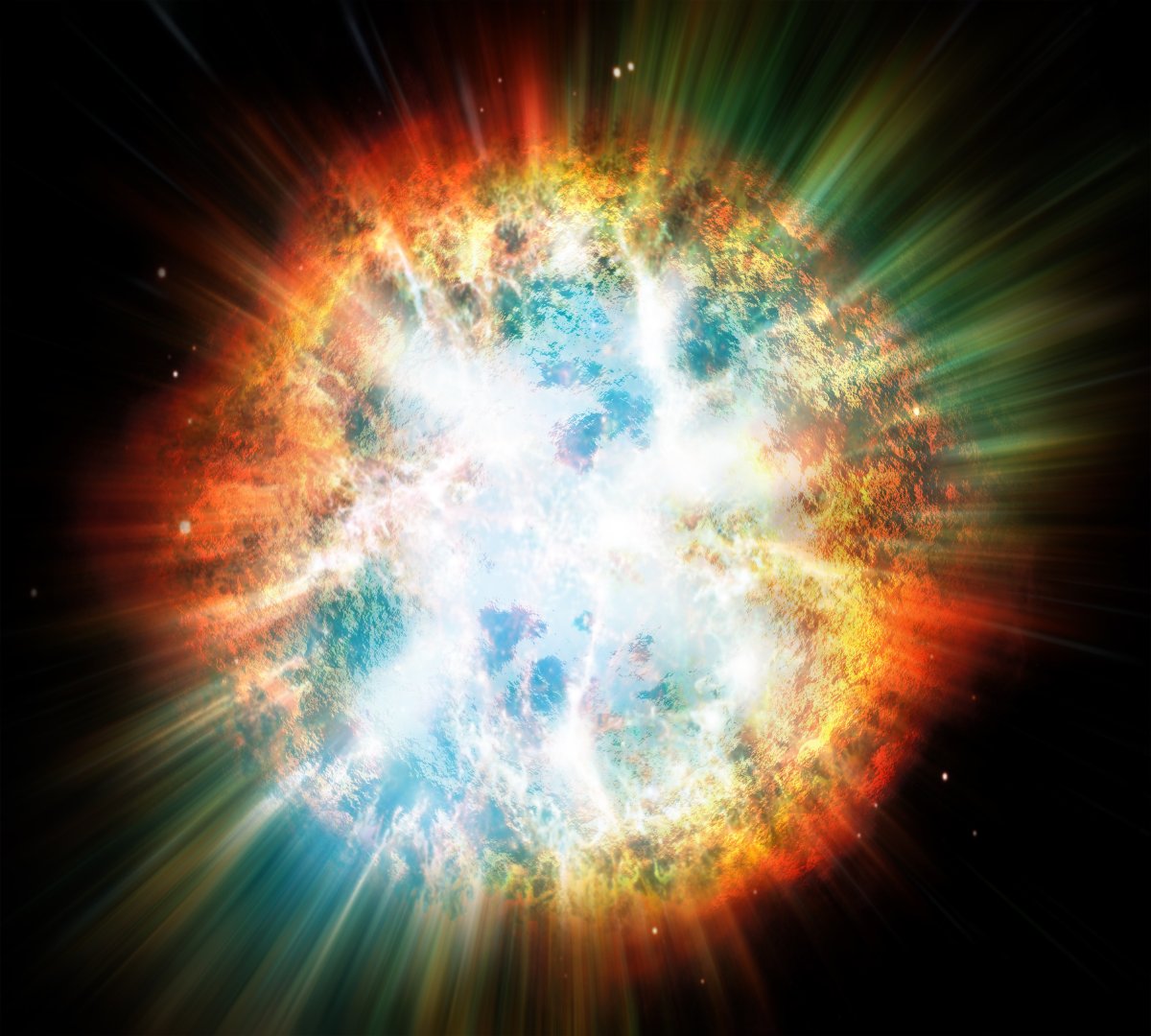A huge surge of gamma-ray energy from space caused electric currents to flow through the surface of the Earth on October 9, scientists have said.
This gamma-ray burst, named GRB221009A, is the strongest in recorded history, according to spaceweather.com.
Gamma rays are the most powerful form of electromagnetic radiation, with the smallest wavelength. They are only produced by enormously energetic events, including supernovae, nuclear explosions and black holes.
"Based on the massive energy released and long duration of the explosion, GRB221009A was likely caused by the collapse of a massive star, more than 30 times the mass of our sun," Brendan O'Connor, an astrophysicist at George Washington University, told Newsweek.

"GRB221009A was between 10-100 times brighter than other gamma-ray bursts, making this a once-in-a-century explosion. The GRB [gamma-ray burst] afterglow is booming bright at all wavelengths, including optical and infrared.
"This allowed astronomers to measure its nearby distance of 2.4 billion light-years, which makes GRB221009A one of the closest very energetic GRBs to date," O'Connor added.
Ore Gottlieb, a theoretical high energy astrophysicist at Northwestern University, told Newsweek: "GRB221009A was about 30 times more energetic than a typical GRB, making it one of the most powerful events ever observed."
After the gamma-ray burst was detected by satellites, Andrew Klekociuk, an atmospheric scientist at the Antarctic Climate Program, used an Earth probe antenna to measure its effects. His data found that the waveforms of the gamma-ray burst and the increase in electrical current in the Earth's surface matched nearly identically.
Seen as a significant (~4 dB) signal decrease in nighttime recordings of VLF transmitters NWC (22.3 kHz; blue) and South Korea (25 kHz; magenta) from Tasmania. pic.twitter.com/oi6zm6oqnT
— Andrew Klekociuk (@Klekociuk) October 12, 2022
According to Andrew Levan, an astrophysics professor at the University of Warwick, the effects of the gamma-ray burst are on the upper atmosphere—the ionosphere—rather than on the Earth's crust.
"Because the gamma-ray photons aren't charged they don't interact with the magnetic field. However, because they are very energetic they can ionize the atoms and molecules in the upper atmosphere—remove electrons from them," Levan told Newsweek.
"This does then leave charged particles in the ionosphere which are subject to magnetic fields and interactions with other charged particles, and these changes can be detected for a short period before things smooth out. In principle, the effects can be somewhat similar to those of solar flares.
"However, we should remember that this is the brightest gamma-ray burst ever detected, and it still only made a small effect. So, we shouldn't worry that our electronics might get fried by ionospheric changes induced by GRBs."
Just saw in this GCN Circular: https://t.co/qWZD6hLQ7w that the huuuuuge Gamma Ray Burst GRB221009A which is the brightest ever detected, has triggered detectable ionospheric disturbances in our own atmosphere. pic.twitter.com/DbGd0eEXDM
— Dominique Boutigny (@AlvindeDiaspar) October 14, 2022
Gottlieb explained that the most massive stars in the universe end their life when their stellar core collapses to a black hole. Gas from the collapsing stellar envelopes fall into the newly formed black hole, which drives the launching of narrow outflows, or jets, from the black hole, moving at 99.99 percent the speed of light. The jets escape from the collapsing star and generate gamma-ray bursts.
Despite the October 9 GRB's power and relative proximity to Earth, humans do not have cause for concern, he said.
"A very close-by—probably inside our Milky Way, within a few thousand light-years from us—GRB pointing at Earth might damage the ozone layer. However GRBs are normally very far away. As an example, GRB221009A is considered a close-by GRB, but it lies 2.4 billion light-years away from Earth—a million times farther away than where a GRB should take place to make an impact on our life," Gottlieb said.
The effects of the burst are expected to continue for around another week.
"If we are right, and this GRB is indeed caused by the explosion of a massive star, then we expect the light coming from the rest of the explosion to start dominating the observed emission around about now," Raffaella Margutti, an astrophysicist professor at the University of California, Berkeley, told Newsweek.
"Basically, the jet light is decaying fast, the supernova light is rising and it is expected to peak at around 15 days after the GRB. We are monitoring this event closely to see the emergence of spectral features associated with the supernova, which would confirm that this event is due to the explosion of a massive star," Margutti added.
Uncommon Knowledge
Newsweek is committed to challenging conventional wisdom and finding connections in the search for common ground.
Newsweek is committed to challenging conventional wisdom and finding connections in the search for common ground.
About the writer
Jess Thomson is a Newsweek Science Reporter based in London UK. Her focus is reporting on science, technology and healthcare. ... Read more
To read how Newsweek uses AI as a newsroom tool, Click here.








